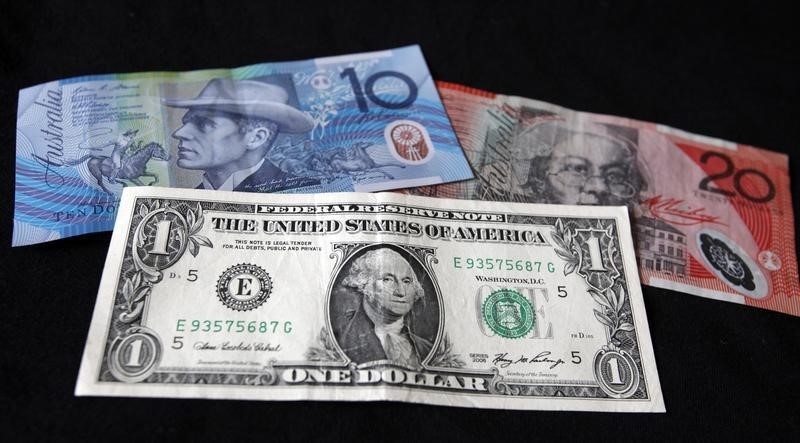By Ian Chua
SYDNEY, April 29 (Reuters) - The odds for an imminent interest rate cut in Australia shortened after a deflation scare this week, bringing the local dollar crashing down to earth after an extended rally that took it to a one-year peak.
Aussie bulls pulled in their horns after data showed all measures of consumer prices were unambiguously soft in the first quarter, with the headline index posting its first quarterly fall in seven years. rushed to price in an easing with interbank futures 0#YIB: implying a 50 percent chance of a cut in the 2 percent cash rate next week, up from 14 percent last Friday.
A quarter-point cut is fully priced by August and the market is even toying with a 1.5 percent cash rate by year end.
The Aussie's short-term trajectory now depends on whether the Reserve Bank of Australia (RBA) cuts its cash rate at its monetary meeting on Tuesday, especially given the stomach-churning rallies in the yen and New Zealand dollar that followed their respective central banks' decisions to hold rates.
The Aussie suffered its biggest one-day drop for eight months in reaction to Tuesday's inflation figures, shedding more than 2 percent. It pulled well away from a recent peak of $0.7836 AUD=D4 , while its trade weighted index =AUD was also knocked off a one-year high.
Even so, the Aussie has already steadied and was last at $0.7626. It's trade-weighted index was at 63.7, versus the recent high of 65.4.
The RBA has indicated it would be happier if the Aussie were nearer $0.7000, while an RBA board member has publicly said he'd be more comfortable with the currency around $0.6500.
INFLATION-TARGETING BANK
Economists, once certain there would be no move in May, are now in two minds. Among the "Big Four" local banks, National Australia Bank was the first to change its view and is now expecting a cut.
"RBA remains an inflation-targeting central bank, so faced with this new lower inflation forecast it now seems likely that the Bank's Board will vote in May to take the opportunity to provide some slight further assistance to the economy," NAB economists wrote in a note to clients.
"To be sure, whether to cut rates or not will likely be a close call."
The annual inflation rates for both the headline and underlying measures slowed to well below the RBA's 2 percent to 3 percent target band.
While Australia is not in deflation yet - typically defined as a sustained and broad fall in prices - local papers were quick to splash the D-word on their front pages. Two columnists, known in some circles as central bank watchers, have also chimed in with predictions of a cut next week.
All of which might spur disinflation expectations, which could hold back investments and spending, a negative for the economy that the RBA will want to avoid.
Some also argue that with annual inflation now running on average around 1.5 percent, down from 2.0 percent, the real cash rate has actually risen to 0.5 percent, from zero percent.
This is something that could be handily remedied by a quarter point cut next Tuesday.
In a world of negative rates and other unconventional central bank stimulus, Australia's real interest rate should be at zero or less in order to be consistent with the RBA's desire for policy to be "very accommodative", they said.
